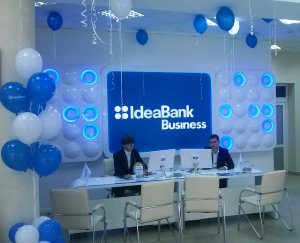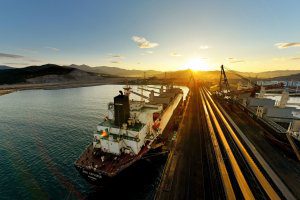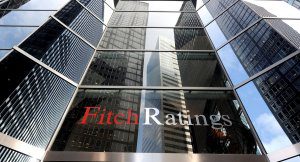
ASTANA. Aug 12 (Interfax-Ukraine) – Kazakhstan’s National Atomic Company Kazatomprom is interested in developing cooperation with Ukraine in various areas of the nuclear fuel cycle (NFC), including production of nuclear fuel in Kazakhstan for Ukrainian nuclear power plants (NPP), Kazatomprom has told Interfax-Ukraine.
The Kazakh Ministry of Energy and Kazatomprom plan to meet with the Ukrainian Ministry of Energy and Coal Industry to discuss cooperation in nuclear energy, Kazatomprom said.
The date of the meeting is yet to be approved, the company said.
Ukrainian Minister of Energy Ihor Nasalyk said earlier that Kazakhstan had expressed the intention to help Ukraine finish the construction of a nuclear fuel plant in Ukraine.
“I am flying to Kazakhstan on August 18. Among other things, we are going to discuss Kazakhstan’s participation in the final stage of the project for construction of a nuclear fuel plant in Ukraine,” he said.
Kazatomprom is the national operator of the Republic of Kazakhstan for export of uranium and its compounds, rare metals, nuclear fuel for nuclear power plants, special equipment, technologies and dual-use materials.

KYIV. Aug 12 (Interfax-Ukraine) – The profit of Idea Bank (Lviv) in January-June 2016 amounted to UAH 11.568 million, while its loss in the same period in 2015 amounted to UAH 53.049 million.
According to a bank press release, its net interest income in the first half of this year increased by 8.1 times compared to the same period last year and amounted to UAH 217.067 million.
The bank’s assets in January-June this year increased by 4.2%, to UAH 2.905 billion, the loan portfolio amounted to UAH 2.19 billion.
Net worth increased by 61.8% and amounted to UAH 242.529 million. In April this year Idea Bank completed the next issue of shares and increased its capital by UAH 81.03 million.
Idea Bank was founded in 1989. The largest shareholder on January 1, 2016 was Getin Holding S.A. (99.522%).
Idea Bank ranked 39th among 109 operating banks on April 1, 2016 in terms of assets (UAH 2.735 billion), according to the National Bank of Ukraine.

KYIV. Aug 12 (Interfax-Ukraine) – Yuzhny and Illichivsk seaports as ‘the sea gates’ of the so-called New Silk Road are ready for cooperation with Chinese business.
The press service of the Ukrainian Infrastructure Ministry said that Minister Volodymyr Omelyan gave the information at a meeting with Chinese Ambassador to Ukraine Du Wei on Thursday.
“Now we can offer rental of terminals, and next year when the concession law would be passed, we will be able to discuss a wider form of cooperation. We are to provide for a powerful and reliable route for delivery of goods from Europe to Asian countries bypassing Russia,” he said.
The minister invited the Chinese diplomat to take part in the Transport Week to be held in Odesa on September 8.
A first experimental cargo train was launched on January 15, 2016 on the New Silk Road by the Infrastructure Ministry jointly with Ukrzaliznytsia.
The dry run of the new container train via Ukraine-Georgia-Azerbaijan-Kazakhstan-China (across the Caspian Sea and the Black Sea) ended in the early hours of January 31, 2016, on the 16th day of the journey.

KYIV. Aug 11 (Interfax-Ukraine) – The SmartMe University educational online platform and seven Ukrainian higher education institutions will receive a EUR816,720 grant from the European Union’s Erasmus program for the implementation of an educational project in the field of the “Internet of Things.”
According to the press service of SmartMe University, with reference to its managing partner Oksana Bila, the coordinator of the project is Newcastle University (Britain).
In addition, universities from Portugal, the UK, Sweden and Italy participate in the project. The works will start on October 15, 2016 and will last three years.
“According to analysts, the financial potential of the “Internet of Things” is $8.9 trillion. Therefore research in this direction is important not only for the IT industry: the detailed study of the IoT [Internet of Things] will allow providing students with knowledge and skills to improve their competitiveness in a rapidly changing labor market,” she said.
SmartMe University is an educational online platform, specializing in training IT professionals since 2010.
Erasmus is a non-profit program of the European Union launched in 1987.

KYIV. Aug 11 (Interfax-Ukraine) – Yuzgas B.V. (the Netherlands), which won the tender for an investor in the production sharing agreement (PSA) for hydrocarbons extraction on Yuzivska field (Donetsk and Kharkiv regions), has undertook during the first five-year phase of the PSA to invest $200 million in geological exploration.
“In particular, during the first year the sum will be $20-30 million,” Nadra Yuzivska Director Viktor Nazarkevych said at a press conference in Kyiv.
He added Yuzgas, founded by the Emerstone Energy private equity firm, which provided guarantees for $200 million, has also committed to drill the first well in the first year.
Nazarkevych noted the offers of other participants were significantly worse: Vitol oil trader’s subsidiary Balkhash with $10 million, and Burisma Holdings with UAH 2.7 billion (equivalent to $108 million).

KYIV. Aug 11 (Interfax-Ukraine) – Fitch Ratings has upgraded Ferrexpo plc’s (Ferrexpo) Long-Term Issuer Default Rating (IDR) and Ferrexpo Finance Plc’s senior unsecured rating to ‘CCC’ from ‘CC’, reads a posting on the rating agency’s website.
“The Recovery Rating on the senior unsecured rating is ‘RR4’. Ferrexpo’s Short-term IDR has been affirmed at ‘C’,” according to the report.
“The upgrade reflects the improvement in Ferrexpo’s liquidity position in comparison with our previous expectations due to higher than expected iron ore prices in H1, 2016 (average $52 per tonne vs. $45 per tonne expected by Fitch) and sustainably high pellet premiums ($25/tonne). In July, Ferrexpo paid the final amortization of its $420 million pre-export financing (PXF) from internally generated cash flow,” Fitch experts stated.
“The group has a further $350 million PXF, which starts to amortise in November 2016 with eight quarterly payments of $43.8 million ending August 2018. We assume that Ferrexpo’s FCF will be around $250 million for 2016 and 2017 and as a result the group will be able to fund these debt payments from internally generated cash,” they said.
The group’s other significant debt instrument is a $346 million eurobond that matures in two equal instalments in April 2018 and April 2019. We believe Ferrexpo will able to fund the first installment of $173.2 million through internally generated cash. However, there is high potential downside risk as iron ore prices remain volatile.
Despite its sound operational profile, refinancing risk for the company remains elevated due to its Ukrainian exposure.
Key rating drivers
Competitive cost producer
Ferrexpo’s operating cost position sits within the first quartile of the global pellets cost curve. In H1, 2016, cash costs improved significantly compared with the previous two years, mainly due to currency depreciation dynamics (50% of operating costs are linked to the hryvnia) and a sustained drop in energy prices. These positive dynamics plus operating efficiency gains resulted in a 23% decrease in year-on-year costs in H1, 2016, reaching $25.7 per tonne, down from $33.4 in H1, 2015. Energy costs now represent around 40% to 50% of total costs, and should contribute to a further reduction in comparative cost levels in H2, 2016.
Ukrainian risk exposure
“Ferrexpo’s operating base is in Ukraine. In the past two to three years the country has experienced high domestic inflation, combined with significant currency depreciation (85% in 2015 vs. U.S. dollars and greater than 125% since 2014), and some delays in VAT repayment by the state. However, military conflict in Donbas region has not directly impacted Ferrexpo’s operations and transport infrastructure due to their location in Poltava region, approximately 425 km north of Donetsk. For 2016 our forecasts assume an average rate of around UAH26/$1, which is in line with the H1, 2016 rate of UAH 25.47 per $1,” reads the document.
Continuing profitability
“Cash costs improvements, together with the pellet premium received over the benchmark 62% iron ore price, have partly offset the 11% drop in top line revenues that followed the fall in iron ore prices in H1, 2016 compared with H1, 2015. As a result, Fitch expects Ferrexpo’s profitability to remain stable, with an EBITDA margin ranging between 30-35% (H1, 2016: 35%) in the medium term. Ferrexpo’s funds from operations- (FFO) adjusted gross leverage was 3.4x in 2015 (vs. 3.6x in 2014) and will decline in 2017 due to our expectations of a slight EBITDA improvement resulting from momentum iron ore prices recovery in H1, 2016, as well as debt reduction, both in absolute terms,” the experts added.
Iron ore premium pellet producer
In H1, 2016, 62% iron ore prices averaged $52 per tonne, down approximately 15% y-o-y and down 58% since February 2014, reflecting oversupply in the global market and in particular a slowdown in demand from the Chinese steel industry.
“However, Fitch expects the demand for premium quality pellets, which are used to make steel, to remain sound. We expect premium pellet supply to be limited in the next couple of years due to the disrupted supply from Samarco and the high capital cost of new pellet plants additions. Ferrexpo compares favourably with its competitors in the premium pellet market. It has long-term contracts with European producers and North East Asian producers. The headline long-term contract pellet premium in the key markets of Western Europe and North East Asia was on average $31 per tonne in H1, 2016 compared with an average of $17 per tonne over the same period in China,” according to the statement.
Key assumptions
– Fitch iron ore price deck: $45/tonne in 2016 and 2017, $50/tonne in 2018, $50/tonne in the long term
– $25/tonne-$30/tonne price premium for pellets
– Production volumes: 11.7 million tonnes per year iron ore pellets in 2016-2018
– $40 million capex in 2016 and 2017
– UAH 26/$1 in 2016 and UAH 28/$1 in 2017
Rating sensitivities
Negative: Future developments that may, individually or collectively, lead to negative rating action include:
– Lowering of Ukraine’s Country Ceiling.
– Material shortfall in pellet premiums or iron ore prices beyond our assumptions without access to alternative sources of liquidity.
– Default becoming imminent or inevitable, including a payment default or a debt restructuring in a form we would consider a distressed debt exchange.
Positive: Future developments that may, individually or collectively, lead to positive rating action include:
– Strengthening of Ferrexpo’s liquidity position due to new sources of financing, a sustainable renegotiated debt maturity profile or higher than expected iron ore prices and/or pellet premiums.
-An improvement in Ukraine’s Country Celling, or sufficient evidence that Ferrexpo should not be constrained by it.
Liquidity
At the end of July 2016, according to Fitch’s estimates, the company’s cash balance was around $50 million vs. $158 million in short-term debt ($56 million in H2, 2016 and $102 million in H1, 2017), and $47 million coupon/interest ($24 million in H2, 2016 and $23 million in H1, 2017). The $156 million short-term debt is composed of $136 million of quarterly PXF instalments starting in November 2016 and $20 million of other debt.
“We forecast that the company will generate approximately $250 million of FCF over the next 12 months (post interest/coupon). This should be just enough to service the company’s debt, working capital and capital expenditures for the next 6 to 12 months, but leaving it exposed to further fluctuations in iron ore prices, currency and energy costs,” the experts said.